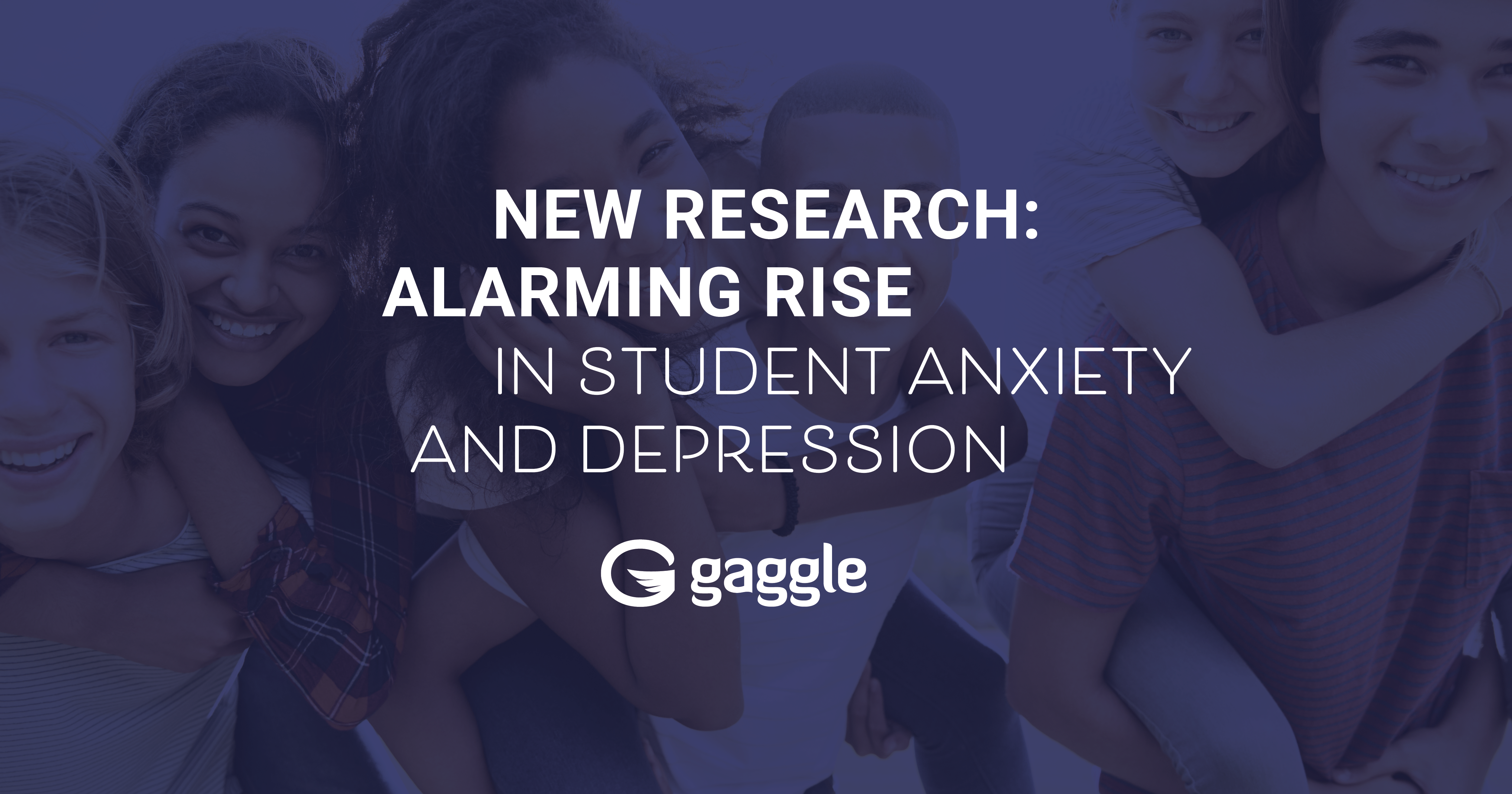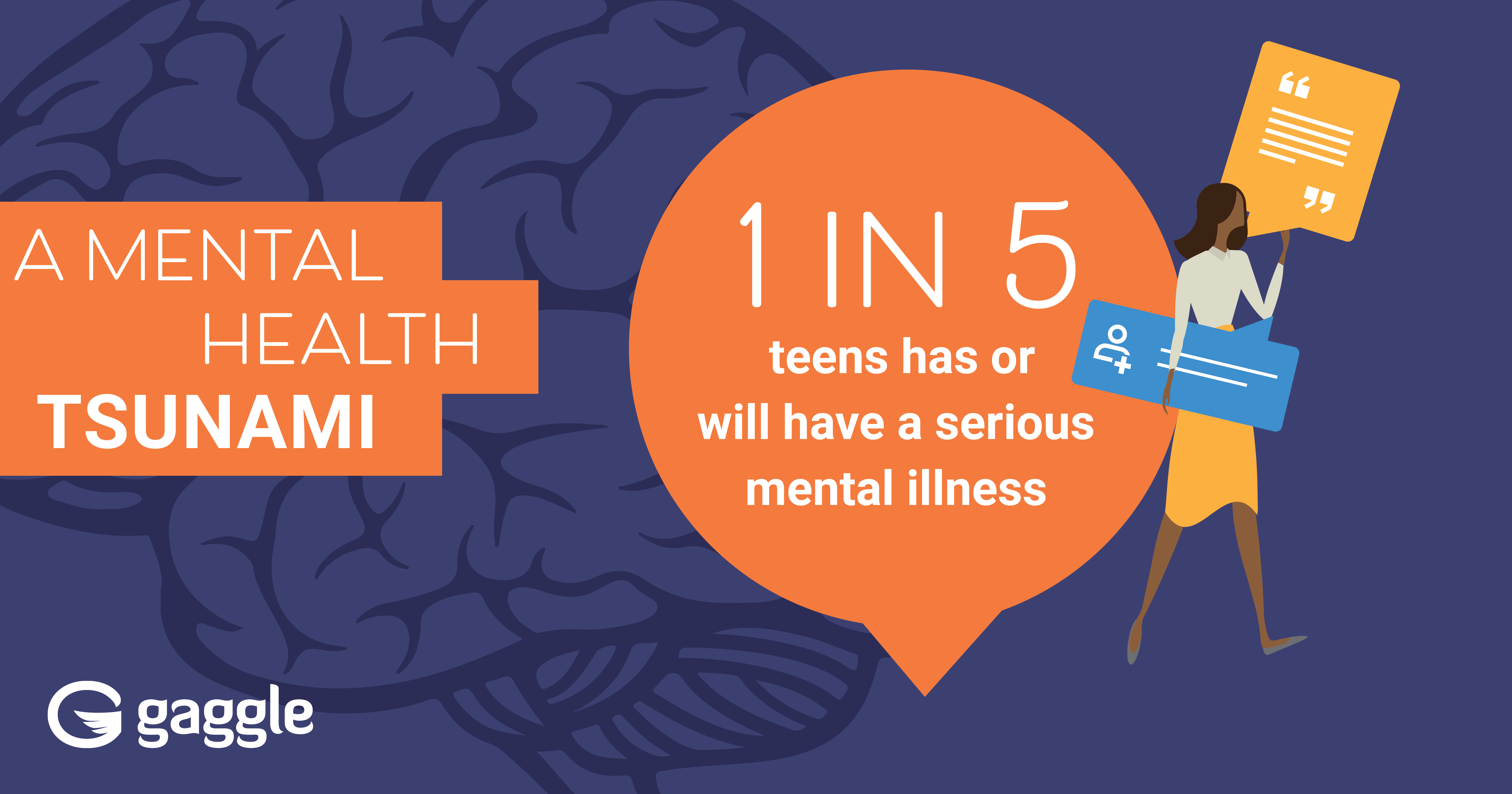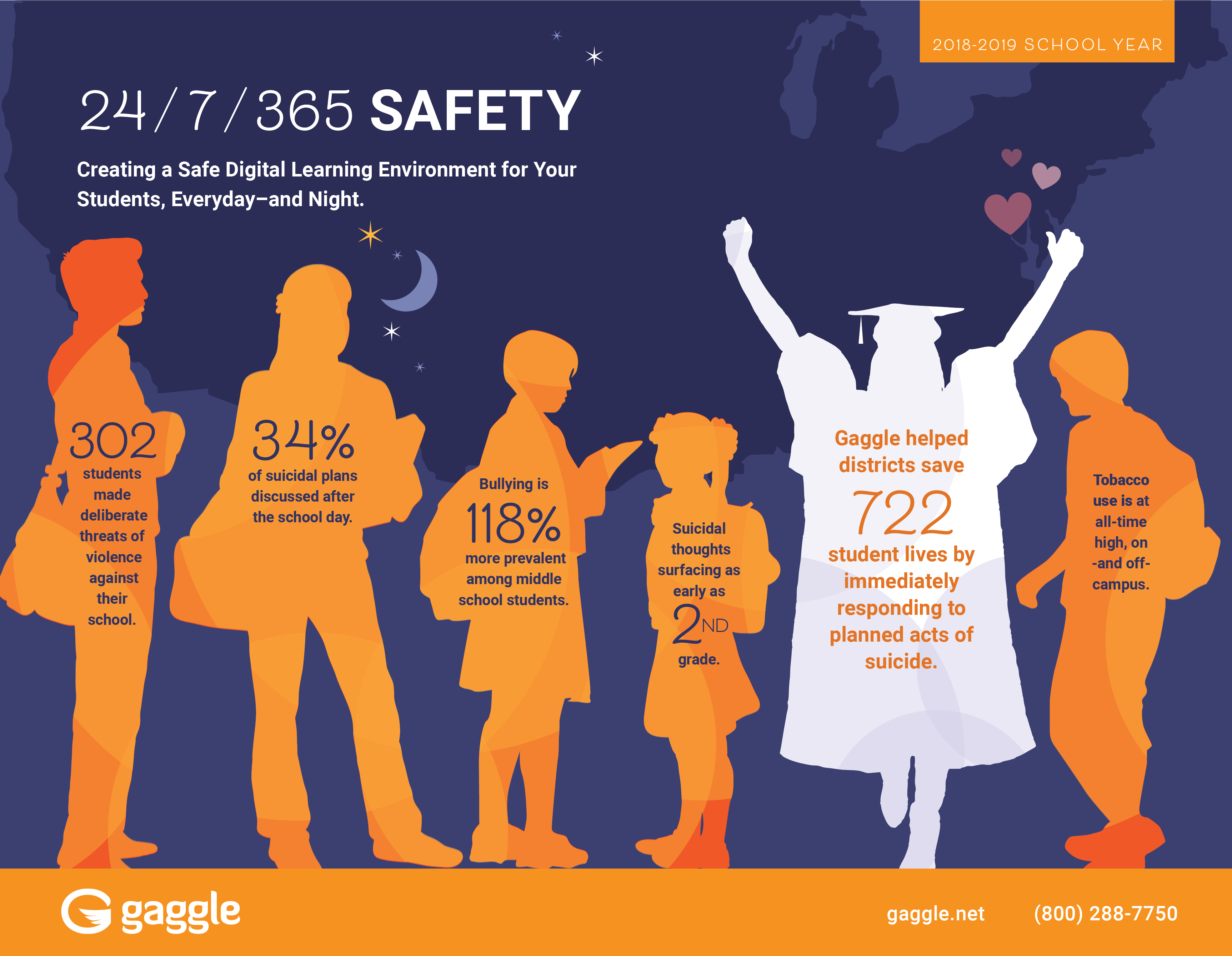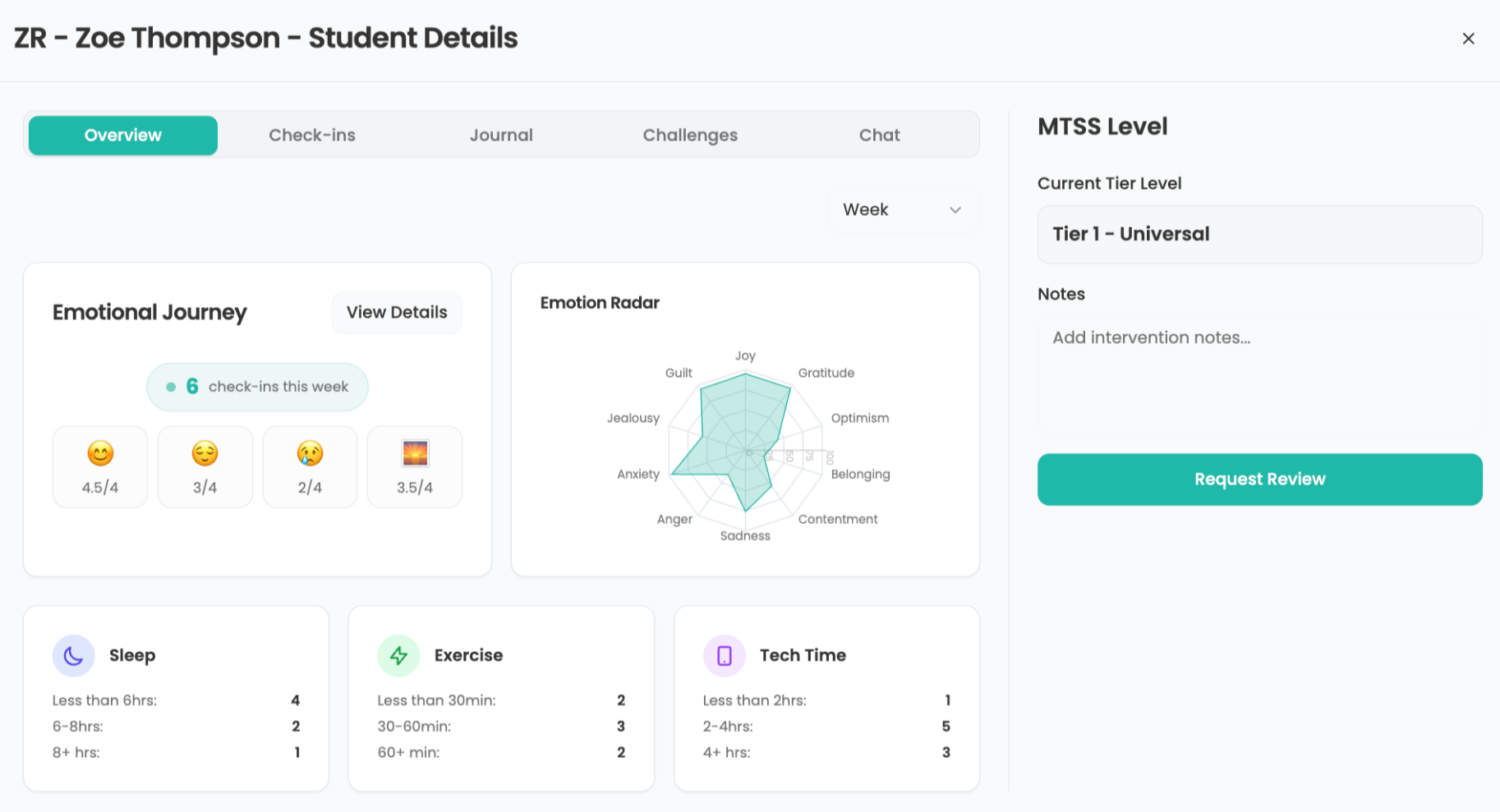BLOG: New Research Shows Alarming Rise in Student Anxiety and Depression
Research reveals that during the 2018–2019 school year, Gaggle safety experts found 52,000 references to suicide or self-harm in students’ online activity.

Student anxiety and depression are on the rise, and adolescent suicides are increasing. The statistics are alarming:
- 10 million U.S. teens ages 13–18 suffer from depression, anxiety, ADHD, or bipolar disorder
- Each day, more than 3,000 high school students try to end their own lives
- Suicide is now the second-leading cause of death for 10- to 19-year-olds
- One in six teens has seriously considered suicide in the past year
- One in five teens has or will have a serious mental illness
- 70% of students with a mental health disorder do not receive treatment
New research reveals that during the 2018–2019 school year, Gaggle safety experts found 52,000 references to suicide or self-harm in students’ online activity. 6,000 were serious enough to merit immediate attention by the school district. There were also 34,000 references to violence toward others—more than 1,600 of these incidents warranted an immediate call to prevent a potential incident.

Teachers and administrators might not see the warning signs of anxiety and mental illness in their day-to-day interactions with students. The majority of these students show no outward sign of their thoughts or intentions. One administrator noted that often the students who most needed help, were the best at hiding it.
But students are revealing these behaviors with their peers online in messages, the documents they create, and the images they share. Unless teachers and administrators are monitoring what students post online in the school’s digital ecosystem, they often can’t see how vulnerable some of their students are.
How Gaggle Helps Schools Monitor Student Mental Health
Gaggle is a student safety management solution that uses a combination of machine learning algorithms and human safety experts to review students’ online activity.
Machine learning technology watches for students’ use of words or phrases that could indicate potentially harmful behavior. If a match is discovered, trained safety professionals evaluate the content to determine whether it poses a credible threat—and if so, how serious it is.
Gaggle’s team of safety experts use a threat assessment rubric to rate the severity of each incident as either a Violation, Questionable Content, or a Possible Student Situation.
- Violations are the least severe type of incident. Students receive warnings via email for violations of their school or district’s Acceptable Use Policy. Administrators can be copied when multiple warnings occur.
- Questionable Content indicates incidents that are cause for concern but do not reveal an imminent threat.
- Possible Student Situations result in direct, immediate personal notifications by telephone to the school or district’s specified contact 24/7.
In their “State of Student Safety” report, Gaggle reveals that across the 4.8. million students served during the 2018–2019 school year, they discovered nearly 120,000 instances of Questionable Content. Of these, nearly 14,000 incidents were serious enough to warrant immediate action by school officials to keep students safe.
How Districts Are Using Gaggle

Many districts across the country use Gaggle as one part of a more comprehensive program to identify students in crisis. Gaggle is often the alarm system that alerts school and district administrators to students who need additional services, such as counseling or support from social services.
Some districts have introduced social and emotional learning (SEL) programs to give students the vocabulary and opportunity to discuss their feelings more openly. Bullying awareness programs, positive behavioral intervention and supports (PBIS), additional school counselors, and other curriculum and non-curriculum awareness programs focus attention on students’ well-being.
In Wichita Falls (TX) ISD, Superintendent Mike Kuhrt wanted a better way to monitor student well-being, so they launched Gaggle. The magnitude of what they found through Gaggle surprised the faculty and staff. When they started reviewing the situations, they found many students who were struggling. Kuhrt has now hired a Director of Social Emotional Services to proactively address mental health issues in middle and high school.
He believes that because students know Gaggle is scanning their digital documents, it may have slowed down some behavior or prevented an incident. “Gaggle pays for itself,” says Kuhrt.
“Once you save one student’s life, you’re done.”
Visit Gaggle.net for more information.

Tools and ideas to transform education. Sign up below.
